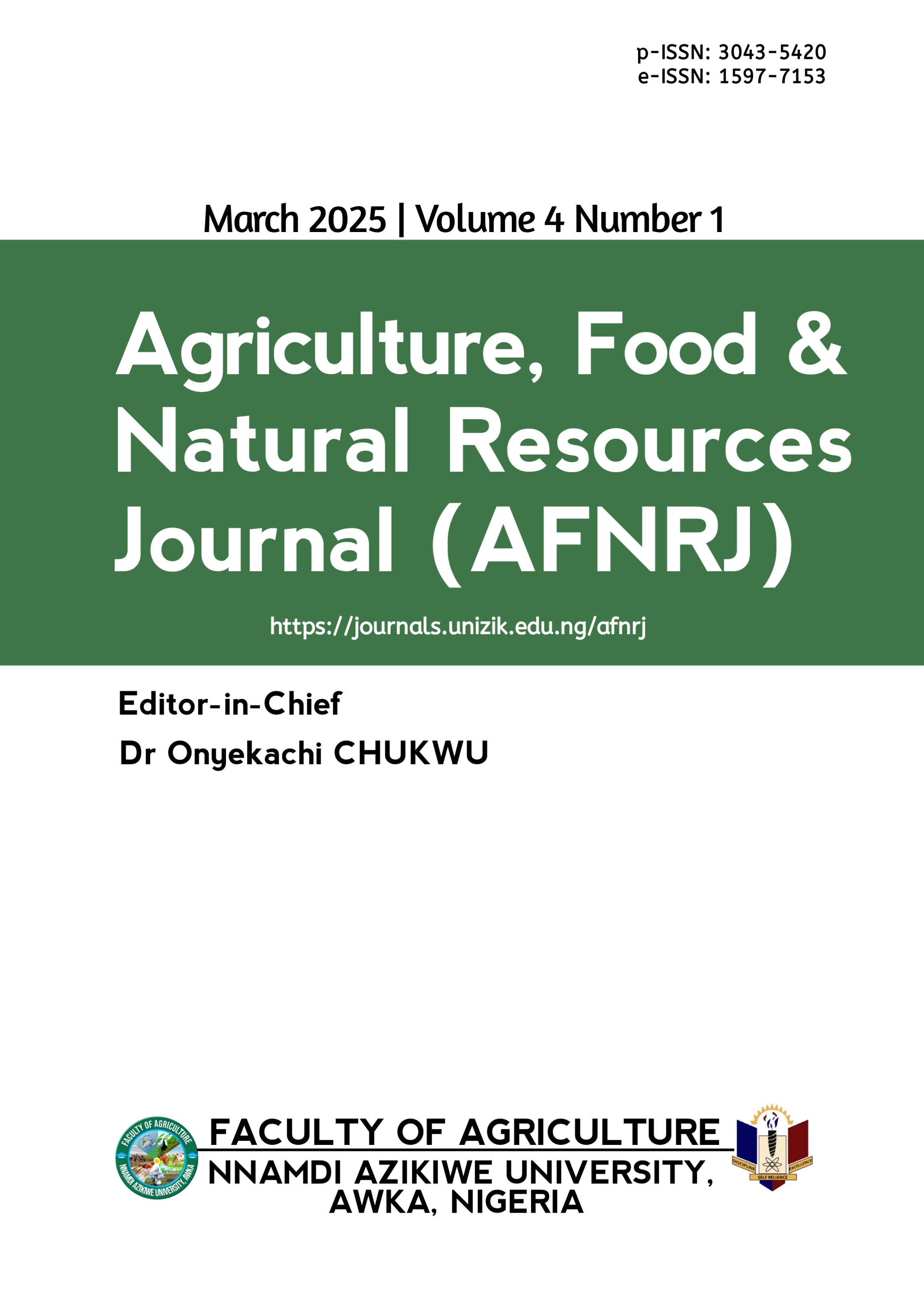Species composition and diversity of some mammals in forest fragments of Gashaka Gumti National Park, Nigeria
DOI:
https://doi.org/10.5281/zenodo.15109739Keywords:
Biodiversity, Endangered species, Mammals, Traps, WildlifeAbstract
This study investigated the species composition and diversity of some mammalian species using camera traps in Gashaka Gumti National Park, Nigeria. Camera trapping was conducted both in wet and dry seasons in lowland rainforest, forest-savanna mosaic, montane, and gallery forests. Camera density (one per 2km2) and traps were used to take photos of moving objects without delay between triggers. They were set to snap 3 photos per burst at an interval of 30 seconds. Data were collected from the forest sites for ninety (90) days each in the wet season and dry season, respectively. Images were identified from memory cards using Kingdon’s field guide to African mammals. The following parameters were recorded: species name, number and group size, sex structure (male and female), age structure (juvenile and adult), activity at time of snapshot, activity time (day or night), activity area, and weather condition. Results obtained indicated that a total of 31 mammalian species were captured in the four (4) forest sites, belonging to five (5) orders (Ungulata, Carnivora, Primate, Pholidota, and Rodentia). Shannon Weiner Diversity Index analysis indicated a significant difference (P ≤ 0.05) between dry and wet seasons mammalian species diversity in forest-savanna mosaic. Mammalian species diversity in dry and wet seasons did not differ significantly (P ≥ 0.05) in lowland rainforest, montane forest, and gallery forest. The existence of endangered species captured through camera trapping is an indicator of the ecological significance of the sites, which has helped to earn the park international recognition.
Downloads
Published
Issue
Section
License

This work is licensed under a Creative Commons Attribution 4.0 International License.
which permits unrestricted use, distribution, and reproduction in any medium, provided the original author and source are credited.
Authors retain the copyright of their published work in the AFNRJ.





